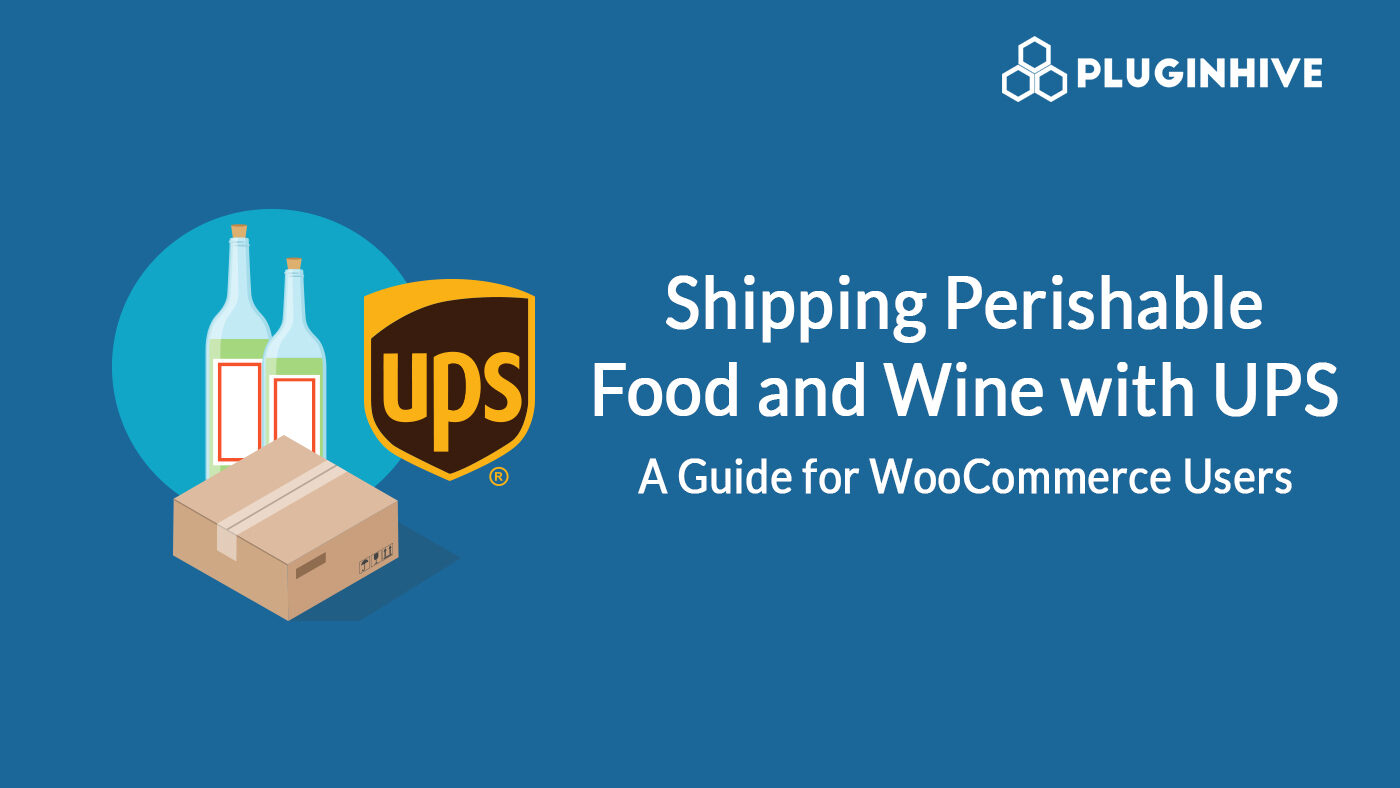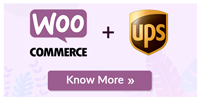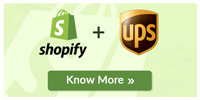This article will cover Shipping Perishable Food and Wine/Alcohol with UPS as a logistics partner. Over this article, we’ll discuss the packaging method, shipping methods to select and what protocol needs to be followed in order for the shipment to reach its destination. Also, we’ll cover the ability to ship Perishable Food and Wine/Alcohol using the WooCommerce UPS Shipping Plugin
There are a few things that the store owner needs to comply with in order to ship Wine and perishable Food with UPS.
Shipping Perishable Food with UPS
UPS permits the shipping of perishable food products under the following conditions:
-
Wrap Food in an Air-tight seal:
- Wrap baked goods, cakes and pies in an airtight seal to retain its freshness. Place the item into a container with individual spaces in order to prevent any potential impact from the sides of the box.
- Pack cookies individually in heat-sealed plastic for a professional approach. Next, pack them in a tin or sturdy container. Once the container is ready, wrap that with plastic or tape the ends shut to make the container airtight.
-
Insulation to retain the cold Temperature:
- For food items like ice cream, frozen desserts, and seafood which require to be frozen or must remain cold, use a sturdy foam container with insulation to keep the item frozen.
- For those food items where they do not require a lot of cooling material, line these items with thermal bubble wrap. Shipments carried food in containers will require a thermal bubble wrap. Here, place the container in a thermal bubble mailer. Place the coolant around the container within the mailer and further pack it into a larger box for shipment. This box needs to have ample padding in order to minimize damage to the shipment.
- In case the shipment consists of food items that do not require to be frozen, pack these shipments in a box, surrounded the box by gel packs and then place it into an insulated container and seal the container for shipment.
-
Thaw and contain liquid in water-tight plastic if it may melt:
Line the inside of the container with a thick plastic liner. On top of the liner, place the absorbent pad or mat. While packing the item, make it a point to encase the item in a watertight plastic bag and in the case of
- Seafood – use two watertight bags for extra protection.
- Live Seafood – use two watertight bags but leave the bags open for air.
-
Choose a Refrigerant to pack your food item:
- A refrigerant is a substance, usually in a fluid state that is used to refrigerate food while in transit. Gel packs and dry ice are the best options in the market for keeping your food cool.
- Gel packs are primarily used for ice and ice-cream shipments, those that require to be frozen. A gel pack typically retains the temperature of food between 30 and 60 degrees F.
- Regular ice will not be preferred as it tends to be heavy to ship and will potentially damage the container as it begins to melt.
- Dry ice is used mainly because they don’t dampen like gel packs as they thaw. However, there are restrictions when shipping with dry ice if the shipment contains more than 5.5 lbs of it as it is at times deemed as a Hazardous Material.
Precautions while choosing a refrigerant:
-
- Make sure the pre-cool the insulated container before packing it so it lasts till the final leg of the journey.
- Handle dry ice with care as it can burn your skin.
- Do not wrap dry ice as it may cause a small explosion. The carbon dioxide in the dry ice will need room to expand.
- Do not use dry- ice while shipping live seafood.
- Do not let the dry ice come in contact with the food.
-
Pack well to minimize movement:
- Padding is one of the primary requirements while shipping food items. This helps by protecting the item from damage. Materials like bubble wrap, packaging peanuts, provide protection to the food in the shipment. Make sure to apply at least 2-3 inches of bubble wrap or peanuts around the food.
- While shipping tins and other food containers, use an ample amount of bubble wrap to stabilize the item in the center of the container. This needs to be at a thickness of 2 inches.
- When shipping fruits and jarred food, use soft foam inserts with customizable openings.
- Use sturdy corrugated boxes to pack all perishable food products. Make sure to seal the box at all its corners by using a pressure sensitive tape.
-
Pick the fastest shipment time
- Perishable food products can get damaged or lose their freshness if there is a delay in the shipment. UPS provides a few services that will have these shipments delivered to you within 30 hours. This results in the recipient receiving his package that will still be fresh.
- UPS Next Day Air – Shipments that need to be delivered latest by the following morning. (max-30 hours transit time)
- UPS 2nd Day Air – Suitable for those shipments that require minimum temperature control.
Tip: Ship your products toward the beginning of a week rather than the end of one so that the shipment will not stay in transit for 2 days (weekend)
Monitoring the shipment, UPS gives its users the ability to track shipments once they have been registered at the UPS Customer Centre. This will enable the shipper and recipient to track their package and figure out if there’s going to be a delay or if the package will arrive on time. You can track UPS shipments here
Shipping with Dry Ice
- Make sure there is no empty space in the package. This helps avoid movement of the item.
- Please wrap those products which are temperature-sensitive in two watertight bags including an absorbent material.
- Refrain from shipping temperature-sensitive shipments over the weekend
- Avoid placing the dry ice at the bottom of the package, this prevents the cold air from circulating.
- Make sure there is proper ventilation for the Carbon Dioxide gas to escape.
Use refrigerants and coolants mainly to keep temperature-sensitive items frozen while in transit.
Because there are no regulations for dry ice shipments using ground transport, you can go ahead and process this shipment to and from the U.S. 48 contiguous states. The shipping process will remain the same as any other Ground Shipment.
However, you will have to process any Dry ice shipment to and from Alaska, Hawaii, Avalon, and Puerto Rico as Air shipments.
U.S. Domestic Air Shipments:
While shipping with dry ice for medical or diagnostic purposes, packages would NOT require the following:
- Hazardous Material Agreement
- Hazardous Material Shipping Papers
- Acceptance audit and no Hazardous Material accessorial charges
- A process through WorldShip® or compatible software
- Mark the outer carton with:
- The words “Dry Ice for Medical Purposes” or “Dry ice for Diagnostic Purposes”
- The amount of dry ice contained in the package
- Additional Paperwork
Shipping packages with dry ice for non-medical, non-hazardous U.S. Domestic air packages with 5.5 pounds dry ice or less, packages will NOT require the following:
- Hazardous Material Agreement.
- Hazardous Material Shipping Papers.
- Acceptance audit, and no hazardous material accessorial charges.
- Process through WorldShip or compliant software.
- Mark the outer carton with:
- The words “Dry Ice” or “Carbon Dioxide, Solid”
- A description of the non-hazardous contents
- The amount of the dry ice contained in the package
- Additional Paperwork.
Shipments for non-medical U.S. domestic packages with dry ice weighing more than 5.5 pounds, packages WILL have to follow the below-mentioned points:
- Process shipments through WorldShip, CampusShip or any other compliant software (dry ice fees will be applied)
- An acceptance audit.
- Mark the outer carton with:
- The words “Dry Ice” or “Carbon Dioxide, Solid” and “UN1845
- The amount of dry ice contained in the package in KG
- Fix a class 9 diamond hazard label on the package.
U.S. International Air Shipments:
International shipments that include dry ice will need to follow the set requirements:
- Shipments with dry ice that are sent to an International destination will require an agreement under UPS’s International Special Commodities (ISC) program.
- All packages must display the appropriate information on the UPS address label, as well as correct marking and labeling.
- If dry ice is used to refrigerate dangerous goods, then a dangerous goods contract is required.
IMP: Before sending food to another country, have UPS shipping experts determine if the country has any restrictions
Shipping Wine and Alcoholic Domestically with UPS
Shipping Wine with UPS is only permitted when the shipper is licensed under the law to export Wine. In order to avail these services, you must enter a contract with UPS.
UPS even provides services for other alcoholic beverages as well, but this is again only made available to those who have entered the agreement with UPS and have signed the contract.
In case the shipment contains beer or alcohol, then the shippers can only ship their products to licensed consignees. However, UPS will not accept any shipment of beer or alcohol for delivery to individual consumers. And the service is made available only between selected states among the 48 contiguous states in the U.S.
UPS permits the following types of wine shipments:
Licensed to Licensed
Only licensed shippers can dispatch wine to licensed consignees, where permitted by law. Licensed to licensed wine shipments cannot be made to consumers, rather only to a licensed retailer or business.
Direct to Consumer –
A few destination states permit shipments to consumers from licensed out-of-state wineries, only applicable when the consumer purchases the wine on-site at the winery. Such states are also called as Winery On-Site Purchase States
All shipments of wine from licensed out-of-state wineries to consumers in Winery On-Site Purchase States may be made if the following conditions are met:
- The winery has to hold all the required licenses and permits in the destination state.
- The wine must be purchased at the physical location and not by mail and the internet.
- The owner of the winery has to confirm that the purchaser is of legal age to purchase wine.
- That the wine is for personal use only and not for resale
- The winery will specify the name of the purchaser as the consignee.
Refer to Addendum A of the UPS Agreement for Approved Wine Shippers for approved Winery On-Site Purchase States.
Direct to Consumer – Winery Direct Shipment States
States allow shipments from out-of-state wineries when the purchase is not made on-site at the winery. The shipments of wine from licensed out-of-state wineries can be made to consignees in “Winery Direct Shipment States” subject to all of the conditions set for the On-Site Purchase States, except that the consignee does not have to make the purchase on-site at the winery (the purchase can be made mail, internet, etc.).
This purchase has to be made at the winery, directly and not from a retailer.
Retailer to Consumer – Retailer Direct Shipment States
A few states allow shipments of wine from out-of-state licensed wine retailers to consumers. These states are called “Retailer Direct Shipment States.”
Shipments of wine from licensed out-of-state retailers may be made to consignees in “Retailer Direct Shipment States” subject to all of the conditions applicable to Winery Direct Shipment States, except that the purchase is made from a licensed out-of-state retailer rather than a winery.
Intrastate Retailer to Consumer – Intrastate Retailer States
There are some states that do not allow shipments to consumers from out-of-state retailers but do allow shipment to consumers from in-state retailers, where the shipper holds a valid retail license allowing sales for off-site consumption.
These states are known as “Intrastate Retailer States.”
What are the requirements for licensed Wine retailers to ship wine via UPS?
- The UPS Agreement for Approved Wine Shippers
- The UPS Wine Industry Fulfillment House Agreement For Approved Wine Shippers
UPS does not accept shipments of wine from shippers who have not entered into one of the above-mentioned agreements.
Shipping Solution Requirements
The shipper must process the wine shipment with a UPS Compatible Shipping solution such as WorldShip or any approved third-party vendor system.
Packaging Requirements
All shipments must meet UPS packaging requirements for wine.
UPS will accept the inner packaging of molded Expanded Polystyrene (EPS) foam, folded corrugated tray, or molded fiber tray. Each packaging component secures the bottles into the center of the shipping container away from the side walls of the shipper. Outer corrugated containers are required to be sturdy.
Adult Signature Required upon delivery
All wine shipments must be made using the UPS Delivery Confirmation Adult Signature Required service, requiring the signature of an adult 21 years of age or older upon delivery.
US Domestic Shipments will require a Wine Shipping Label
All packages containing wine must be labeled by the shipper with a special alcoholic beverage shipping label in addition to any other labeling that may be required by the origin or destination state.
Shipping Wine and Alcoholic beverages Internationally
UPS provides its users with a bundle of service options that provide an expansion of the wine industry into new markets. UPS’s Wine delivery/shipments also help in the growth of revenue and minimize costs apart from assisting in the delivery experience.
With the help of UPS, shippers are able to streamline their wine shipping process, thus saving valuable time. This is done by providing real-time tracking and notification to their customers to ensure a timely delivery that meets your customer’s delivery expectations.
|
1 to 3 Day Delivery Service
|
UPS Worldwide Express Guaranteed – *Depending on the destination, shipments get delivered by 10:30 AM, 12:00 PM or latest by 2:00 PM |
|
|
UPS Worldwide Expedited Plus – *Depending on the origin or destination, shipments will be delivered within one to three days either by 8:30 AM, 9:00 AM or latest by 11:00 AM |
|
|
UPS Worldwide Express Freight – *Guaranteed one to three-day delivery based on the origin and destination addresses |
|
|
UPS Worldwide Express Freight Midday – *Guaranteed one to three day delivery between 12:00 PM and 2:00 PM |
|
2 to 5 Day Delivery Service
|
UPS Worldwide Expedited – *Guarantees delivery between 2 to 5 days depending on the origin and destination |
|
By Scheduled Date
|
UPS Standard – *Provides Day specific guaranteed ground delivery to and from Canada |
The locations or countries that regularly import Wine and spirits from the U.S are:
Argentina, Czech Republic, Japan, Philippines, Australia, Dominican Republic, Luxembourg, Romania, Bahamas, Finland, Malta, Slovenia, Belgium, Germany, Monaco, South Korea, Bulgaria, Guatemala, Netherlands, Antilles, Taiwan, Cayman Islands, India, Norway, United Kingdom, Cyprus, Jamaica, and Peru
In order to meet the packaging standards, UPS has laid down a few tips for good packaging. This helps ensure that the wine arrives safely and on time. UPS accepts Moulded Expanded Polystyrene (EPS) foam, fold-able corrugated trays, or either a Moulded Fibre tray. These packaging components secure the bottle toward the center of the container and away from the sides of it.
Other methods of wine packaging that are approved by UPS are:
- Polystyrene inner packaging with a corrugated outer container
- Pre-molded Polystyrene glass bottle shippers are designed to provide maximum inner protection for different types of glass bottles. Ship all Polystyrene packaging inside an appropriate size outer corrugated box with all closure flaps sealed securely top and bottom with pressure sensitive tape
- Molded pulp or die-cut corrugated inner packaging with a corrugated outer container
- Molded pulp packaging has to be pre-shipment tested by the manufacturer to meet ISTA or the UPS Package Design and Test Lab procedure requirements. Fit all molded pulp or die-cut corrugated inner components, snugly inside an appropriate size outer corrugated box with all flaps sealed securely top and bottom with pressure sensitive tape
- Sealed Air’s Korrvu Select – Ships wine with presentation and protection
- Korrvu Select is a corrugated packaging solution that secures each bottle of wine in its own individual retention sleeve, keeping the bottle from moving during the shipping process. Each unique sleeve can be shipped individually, in a two pack or three pack, or a Korrvu tray holding three bottles can be stacked for shipping six, nine, or twelve bottles. One or more trays are placed in a separate carton for ease of shipping.
Guidelines for shipping Wine and Alcoholic products with UPS
- All Wine retailers who would like to ship their products Internationally must have an International Special Commodity Alcohol agreement before they can begin shipping their products.
- All shipments will require a UPS International Air Waybill, a detailed Commercial Invoice and those shipments which are Business to Customers must have UPS Delivery Confirmation Adult Signature Required.
- UPS shall have the sole right to modify any requirement for International wine or Alcohol shipments without prior notice.
- Customers will have to be responsible for staying up-to-date with the changes in the notice and should continue to comply with any changes that are made by UPS. These changes can be in the form of documentation, labeling, packaging or any other requirement or restrictions.
- The shipper’s responsibility is to comply with the applicable International Laws and Regulations.
Shipping Perishable Food and Wine/Alcohol using WooCommerce UPS Shipping Plugin
While shipping perishable food and wine with WooCommerce, you would require the WooCommerce UPS Shipping Plugin to complete the task for you. Unfortunately, since WooCommerce does not provide a solution for shipping Perishable Food and Wine/Alcohol stand alone, the WooCommerce UPS Shipping Plugin grants the user the ability to display live shipping rates based on the origin and destination and the dimensions and weight of the package, it also gives you the ability to generate and print shipping labels, track shipments, ship dangerous/hazardous materials as well as shipping Perishable food and Wine/Alcohol.
Remember: In order to be able to configure Alcoholic Beverages for shipping using WooCommerce UPS Shipping Plugin, you will have to first sign an agreement with UPS. Upon doing so, the plugin will automatically provide the user with the service availability. If you are a contract customer, then make sure you enter the right account details while setting up the plugin.
The process:
- Begin by setting up the WooCommerce UPS Shipping Plugin.
- Proceed to the settings page and configure the shipping services you’d prefer to use to ship Perishable Foods and Wine.

- Open the product page and proceed to Product Data > Shipping and configure the product if it is an alcoholic beverage and save the product.
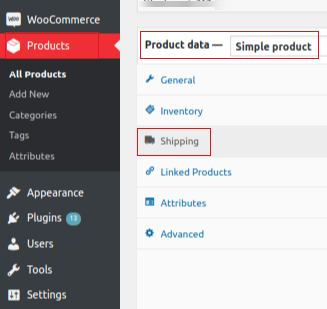
- Jump over the store and add the item to the cart.
- Enter the destination address and pick the most appropriate delivery service.
- Process the checkout and confirm the order.
- Now proceed to the Order Details page in WooCommerce and scroll to the bottom of the page to UPS Shipment Label
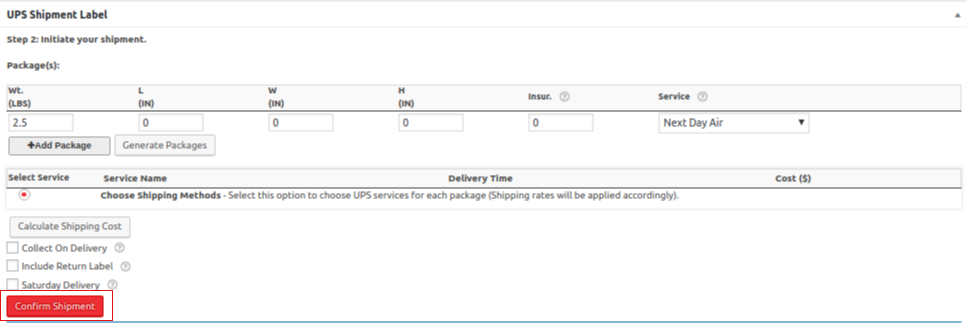
- Generate packages and print labels. The shipping label will include the notice if the product is Alcoholic in nature or not. Based on this the necessary steps will be taken by UPS to ensure the package is compliant with the agreement that was signed.
Final Thoughts…
The ability to ship Perishable Foods and Wine/Alcoholic beverages have been sought after by many for a long time. This article covers how you are able to accomplish that. with the help of UPS and the WooCommerce UPS Shipping Plugin
, that process has been simplified. Upon reading this article you will uncover the benefits, restrictions, and the packaging process for you to being shiping Perishable Food and Wine/Alcoholic beverages within the U.S and International Destinations.
If there’s any question or doubt regarding the article or the plugin. Please feel free to reach out to us by either commenting below the post or by getting in touch with our Support Team and they will have your query resolved at the earliest.

